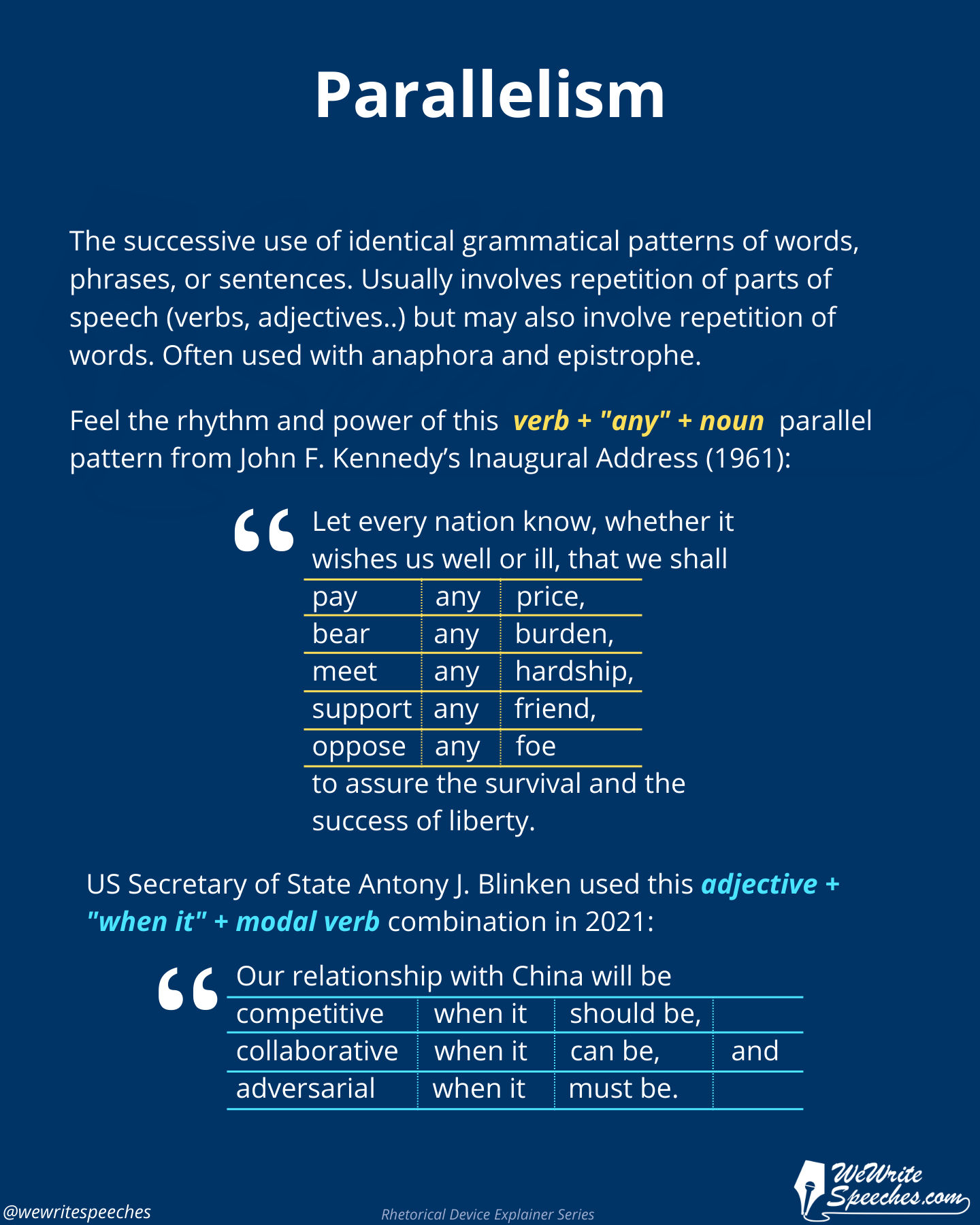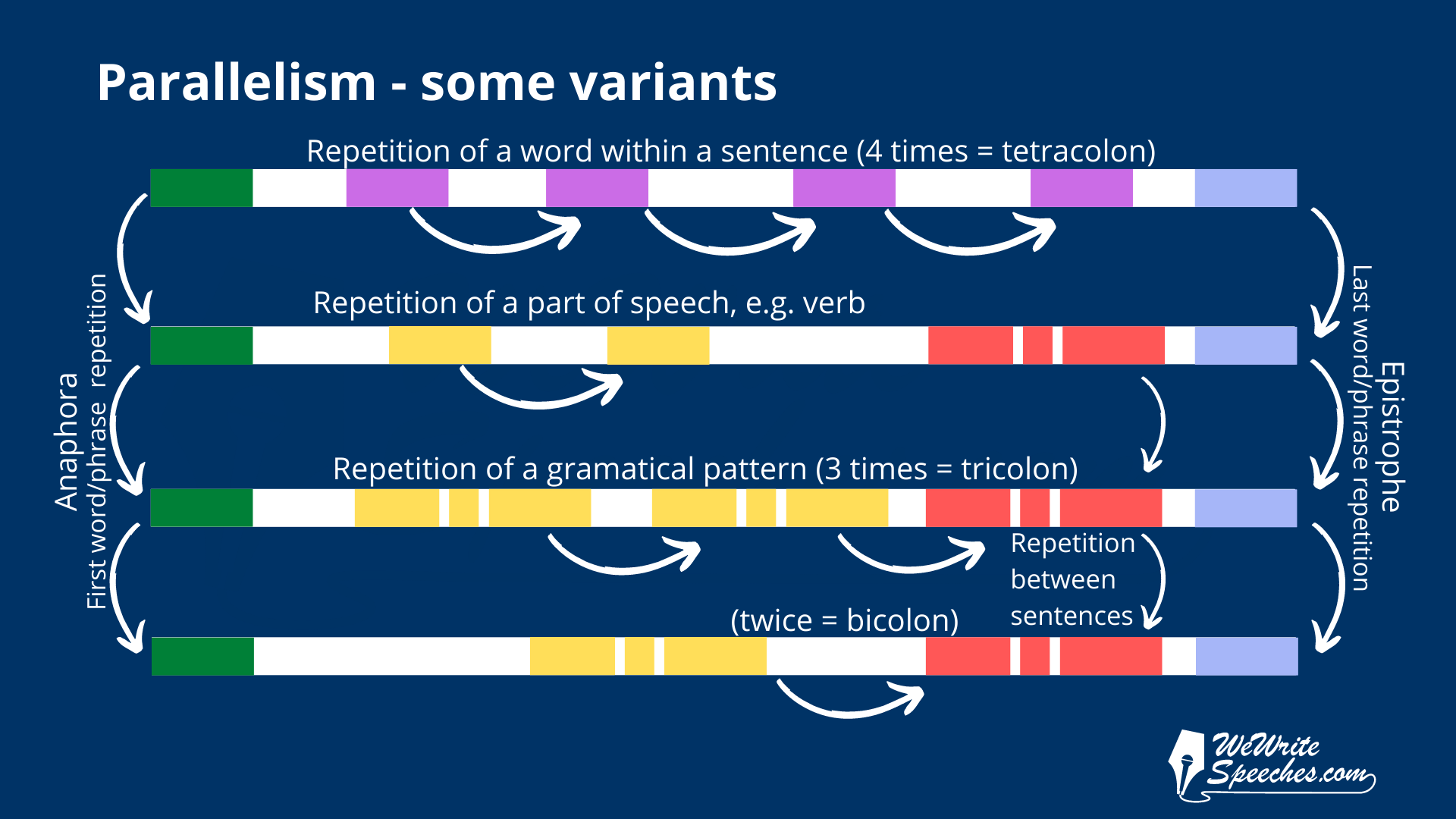Rhetorical Device: Parallelism
Parallelism is a rhetorical device that is commonly used in public speaking to emphasize key points, create cohesion between thoughts, and help audiences better understand the ideas being presented. It refers to the repeating of words, phrases, or clauses in order to create a rhythmic structure, or to emphasize the relationship between two or more ideas. Used effectively, parallelism can help create a sense of balance and emphasize a point in an engaging and memorable way. It is an important tool in the speechwriter's arsenal; one that can help shape the tone and flow of a speech.
Examples
I stand here today humbled by the task before us, grateful for the trust you have bestowed, mindful of the sacrifices borne by our ancestors. Barack Obama, "First Presidential Inaugural Address" (20 January 2009)
Let every nation know, whether it wishes us well or ill, that we shall pay any price, bear any burden, meet any hardship, support any friend, oppose any foe to assure the survival and the success of liberty. John F. Kennedy, "Inaugural Address" (20 January 1961)
Our relationship with China will be competitive when it should be, collaborative when it can be, and adversarial when it must be. Anthony J. Blinken, "A Foreign Policy for the American People" (3 March 2021)

Here is an interesting example of a parallel structure which is built from pairs of rhetorical questions that have implied "No / Yes" answers:

Are we a nation that tolerates the hypocrisy of a system where workers who pick our fruit and make our beds never have a chance to get right with the law? Or are we a nation that gives them a chance to make amends, take responsibility, and give their kids a better future?
Are we a nation that accepts the cruelty of ripping children from their parents’ arms? Or are we a nation that values families, and works together to keep them together?
Are we a nation that educates the world’s best and brightest in our universities, only to send them home to create businesses in countries that compete against us? Or are we a nation that encourages them to stay and create jobs here, create businesses here, create industries right here in America? Barack Obama, "Remarks by the President in Address to the Nation on Immigration" (20 November 2014)
Parallelism is a very broad concept and can be achieved in many different ways, including the following:
- repetition of sounds using techniques like rhyme, alliteration, or assonance
- repetition of words in different clauses
- repetition of words immediately following eachother (a technique called epizeuxis)
- repetition of words in different sentences (a technique called mesodiplosis)
- repetition of parts of speech (e.g. verbs, nouns, adverbs..)
- repetition of phrases or clauses using a rhetorical device called isocolon which encompasses bicolon, tricolon and tetracolon
- repetition of the same word or phrase at the beginning of successive clauses or sentences (a technique called anaphora)
- repetition of the same word or phrase at the end of successive clauses or sentences (a technique called epistrophe)
- the combination of anaphora and epistrophe (called symploce)

Further reading
- Andrew Dlugan's article on the 'Six Minutes' blog Visit
- Silva Rhetoricæ: The Forest of Rhetoric Visit
- Wikipedia page on parallelism (rhetoric) Visit
- Nordquist, Richard: "Definition and Examples of Parallel Structure" ThoughtCo Visit
- Learning English: The Power of Parallelism Visit
- yourdictionary.com: Parallel Structure Examples Visit
